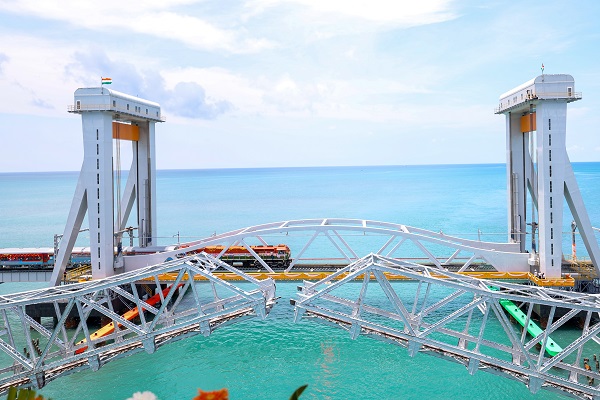Gold trading range for the day is 71200-72020 - Kedia Advisory

Gold
Gold settled down by -0.14% at 71554 yesterday, pressured by elevated U.S. Treasury yields and a stronger dollar. Investors are awaiting more economic data for further clues about the interest rate path. Physical demand remains subdued in major markets like India and Turkey, although signs of recovery are emerging as consumers seek protection against local inflation. The World Gold Council reported that central banks bought a net 10 tonnes of gold in May, a 56% drop from April, and significantly below the 12-month average of 42 tonnes. China's gold market was notably impacted after the central bank halted its 18-month buying spree in May. U.S. data last week indicated that prices were unchanged in May, while consumer spending rose moderately. San Francisco Federal Reserve Bank President Mary Daly noted that the unchanged inflation from April to May is a positive indication that policy measures are effective. Gold imports to China via Hong Kong fell 38% in April compared to March, reflecting a significant drop in net imports to 34.6 metric tons from 55.8 tonnes. This decline marks a shift from high consumption levels in the first quarter, where China saw a 5.94% year-on-year increase, consuming 308.91 metric tons. In India, gold demand remained weak due to high prices and expectations of a potential import duty cut in the upcoming budget. Technically, the gold market is under fresh selling pressure, indicated by a 1.65% increase in open interest to settle at 14299 while prices dropped by -100 rupees. Gold is currently receiving support at 71380, with a potential test of 71200 levels if it drops below this support. On the upside, resistance is expected at 71790, with a move above possibly testing 72020.
Trading Ideas:
* Gold trading range for the day is 71200-72020.
* Gold prices seen under pressure from elevated U.S. Treasury yields and a stronger dollar
* Powell speech: Inflation may get back to 2% late next year or following year
* Central banks' net gold buying down 56% m/m in May
Silver
Silver prices edged up by 0.16% to 89893, driven by comments from Fed Chair Powell at the ECB Forum, which reinforced expectations that the Fed might cut interest rates this year. Powell highlighted that inflation is resuming its disinflationary trend and that significant progress has been made, though more positive data is needed. Traders are also closely watching the JOLTS report to gauge labor market strength. Meanwhile, the presidential debate and a Supreme Court ruling increasing the chances of a second term for Donald Trump have pressured the bond market, as his policies are seen as inflationary. The number of job openings in the U.S. rose by 221,000 to 8.140 million in May, exceeding market expectations of 7.91 million. In the Euro Area, annual inflation eased to 2.5% in June from 2.6% in May, aligning with market forecasts. India's silver imports in the first four months of 2024 have already exceeded the total for all of 2023, driven by demand from the solar panel industry and investor bets on silver's outperformance against gold. This surge in imports, which reached a record 4,172 metric tons from January to April, up from 455 tons the previous year, could support global silver prices. The UAE accounted for nearly half of these imports, benefiting from lower import duties. Technically, the silver market is experiencing short covering, with open interest dropping by 1.16% to settle at 23,439 while prices increased by 143 rupees. Silver finds support at 89240, with potential to test 88590 if breached. Resistance is anticipated at 90705, with further gains possibly testing 91520.
Trading Ideas:
* Silver trading range for the day is 88590-91520.
* Silver gains after Fed’s Powell reinforced bets the Fed will in fat cut interest rates this year.
* Fed Chair Powell said inflation now shows signs of resuming its disinflationary trend.
* The number of job openings rose by 221,000 from the previous month to 8.140 million in May 2024.
Crudeoil
Crude oil settled down marginally by -0.01% at 6949, as fears of supply disruptions from Hurricane Beryl faded. The hurricane, initially a category 5 storm, became the strongest storm to form in the Atlantic this early in the season but made landfall on Carriacou Island and headed towards Jamaica with reduced impact on oil supply. Geopolitical tensions also contributed to market uncertainty, with Israel reporting 18 soldiers injured in a drone attack by Iran-backed Hezbollah, raising concerns about a broader conflict. Oil prices are supported by OPEC+ supply constraints and increased travel, with traders closely monitoring gasoline demand ahead of the US Independence Day holiday. OPEC's oil output rose for the second consecutive month in June, with increased supply from Nigeria and Iran offsetting voluntary supply cuts by other members and the wider OPEC+ alliance. OPEC pumped 26.70 million bpd in June, up 70,000 bpd from May. In the US, crude stocks and gasoline inventories increased while distillate inventories fell for the week ending June 21. According to the EIA, crude inventories rose by 3.6 million barrels to 460.7 million barrels, against expectations of a 2.9 million-barrel draw. Crude stocks at the Cushing, Oklahoma delivery hub fell by 226,000 barrels. Refinery crude runs dropped by 233,000 barrels per day, with refinery utilization rates falling by 1.3 percentage points. Technically, the crude oil market is under long liquidation, evidenced by a 16.31% drop in open interest to settle at 6102 while prices dipped by -1 rupee. Crude oil is currently receiving support at 6910, with a potential test of 6872 levels if it falls below this support. On the upside, resistance is expected at 7012, with a move above possibly testing 7076.
Trading Ideas:
* Crudeoil trading range for the day is 6872-7076.
* Crude oil pared gains as fears of supply disruptions from Hurricane Beryl faded
* Some support seen amid OPEC+ supply constraints and increased travel
* OPEC oil output rose in June for a second consecutive month.
Naturalgas
Natural gas prices fell by -2.63% to 204, influenced by increased production from companies like EQT and Chesapeake Energy, and rising output in recent weeks. Additionally, forecasts for reduced demand over the next two weeks and an ongoing oversupply in storage further pressured prices. This decline occurred despite a persistent heat wave across much of the country, which has kept power generators burning significant amounts of gas to meet air conditioning needs. Data from financial firm LSEG indicated that gas output in the Lower 48 U.S. states rose to an average of 98.8 bcfd in June, up from a 25-month low of 98.1 bcfd in May, and nearing the record high of 105.5 bcfd set in December 2023. Meteorologists predict that weather across the Lower 48 states will remain hotter than normal through at least mid-July. As a result, LSEG forecasts that average gas demand, including exports, will rise from 99.8 bcfd this week to 105.8 bcfd next week, though these forecasts are lower than previous outlooks. In June, gas flows to the seven major U.S. LNG export plants eased slightly to 12.8 bcfd, down from 12.9 bcfd in May and the record high of 14.7 bcfd in December 2023. U.S. utilities added 52 billion cubic feet of gas into storage for the week ending June 21, 2024, which is 314 Bcf higher than the same time last year and 528 Bcf above the five-year average of 2,569 Bcf. Technically, the natural gas market is experiencing fresh selling, with open interest rising by 0.55% to settle at 31,394 while prices dropped by -5.5 rupees. Natural gas finds support at 201.6, with a potential to test 199.2 if breached. Resistance is anticipated at 207.2, with further gains possibly testing 210.4.
Trading Ideas:
* Naturalgas trading range for the day is 199.2-210.4.
* Natural gas dropped due to increased production after companies like EQT and Chesapeake Energy ramped up drilling.
* Pressure also seen on rising output in recent weeks, forecasts for less demand over the next two weeks.
* In June, gas output in the Lower 48 states rose to 98.6 bcfd from a 25-month low of 98.1 bcfd in May.
Copper
Copper prices settled up by 0.15% at 847 yesterday, driven by increasing physical demand in China. Should prices remain relatively stable, this demand is likely to continue. Inventories of copper in LME-approved warehouses rose to 180,125 tons on June 27 from around 104,000 tons in mid-May. The Yangshan copper discount tightened to $7 a ton on June 28, from as low as a $20 discount in May, indicating a stronger appetite for importing copper into China. Despite this positive demand outlook, copper prices may face pressure in the third quarter as Chinese smelters are expected to boost supply post-maintenance season. Copper inventories in Shanghai Futures Exchange warehouses fell by 1% from the previous week as of June 21. Additionally, recent PMI reports suggest a poor manufacturing outlook in major economies, exacerbating concerns of slowing industrial demand in China, the top consumer of copper. The global refined copper market showed a surplus of 13,000 metric tons in April, compared to a 123,000 metric tons surplus in March, according to the ICSG. World refined copper output in April was 2.29 million metric tons, while consumption was 2.28 million metric tons. Adjusted for inventory changes in Chinese bonded warehouses, the surplus in April was 33,000 metric tons. China's unwrought copper imports in May rose 15.8% year-on-year, surpassing market expectations despite weak physical consumption. Imports were 514,000 metric tons last month, up 17.4% from April. Technically, the copper market is under short covering, with a 3.2% drop in open interest to settle at 8296 while prices increased by 1.25 rupees. Copper is currently supported at 841.7, with a potential test of 836.5 levels if it falls below this support. On the upside, resistance is expected at 853.2, with a move above possibly testing 859.5.
Trading Ideas:
* Copper trading range for the day is 836.5-859.5.
* Copper gains as physical demand in China has been picking up.
* Inventories of copper in LME-approved warehouses climbed to 180,125 tons on June 27, from around 104,000 tons in mid May.
* The Yangshan copper discount has tightened to $7 a ton on June 28, from as low as a $20-discount in May.
Zinc
Zinc prices rose by 0.43% to 266.55, buoyed by hopes of improved demand in China following recent price drops and ongoing supply concerns. The sentiment was also lifted by the People's Bank of China's reaffirmation of its easing monetary stance. However, the upside remained limited as China's industrial output slowed more than expected in May, indicating weak industrial demand, compounded by a contractionary official manufacturing PMI in the world's top zinc consumer. In China, zinc concentrate imports fell by 24% in the first four months of this year compared to the previous year, driven by a tightening raw materials market. The spot treatment charges for imported zinc concentrates have plummeted to $30-50 per ton, insufficient to cover processing costs for many Chinese smelters. Consequently, Chinese smelters are increasingly turning to domestic sources for their zinc supply. Globally, zinc mine production fell by 2% in 2022 and another 1% in 2023. The downward trend continued in the first quarter of this year, with output sliding another 3% year-on-year, as per the ILZSG. The squeeze on raw materials has been accentuated by restarts of idled smelter capacity in Europe, reducing the availability of concentrates on the spot market. The global zinc market surplus fell to 22,100 metric tons in April from 70,100 tons in March, with a cumulative surplus of 182,000 tons in the first four months of the year compared to 282,000 tons in the same period last year. Technically, the zinc market is under fresh buying pressure, with a 5.26% increase in open interest, settling at 2884 while prices rose by 1.15 rupees. Zinc finds support at 264.6, with a potential to test 262.5 if breached. Resistance is anticipated at 270.4, with further gains possibly testing 274.1.
Trading Ideas:
* Zinc trading range for the day is 262.5-274.1.
* Zinc gains amid hopes of improved demand in China following recent price drops and supply concerns.
* The global zinc market surplus fell to 22,100 metric tons in April from 70,100 tons in March.
* In China, zinc concentrate imports decreased by 24% in the first four months of this year compared to the previous year.
Aluminium
Aluminium prices settled down by -0.07% at 230.3 yesterday, influenced by signs of ample supply and muted demand. However, the downside was limited as market sentiment improved due to China's central bank reinforcing its easing monetary stance to bolster economic stability. Inventories in warehouses monitored by the Shanghai Futures Exchange increased by 2.0% from the previous week as of June 14. Meanwhile, the US Manufacturing PMI rose to a three-month high of 51.7 in June 2024 from 51.3 in May, beating forecasts of 51. China left its key benchmark lending rates unchanged as Beijing's monetary easing efforts are constrained by narrowing interest rate margins and a weakening currency. Global primary aluminium output rose 3.4% year-on-year to 6.1 million tons in May, according to the International Aluminium Institute. China's aluminium production increased by 7.2% to 3.65 million tonnes in May from a year earlier, with a total production of 17.89 million tonnes in the first five months of the year, a rise of 7.1% from the same period last year. China's aluminium imports surged 61.1% in May from a year earlier, with market participants attributing the increase to rising shipments from Russia, which faces Western sanctions. China imported 310,000 metric tons of unwrought aluminium and products last month, with Russia significantly boosting its shipments to China. Technically, the aluminium market is under long liquidation, as evidenced by a 1.56% drop in open interest to settle at 4356 while prices dipped by -0.15 rupees. Currently, aluminium is getting support at 229.7, with a potential test of 229.1 levels if it falls below this support. On the upside, resistance is expected at 231.3, with a move above possibly testing 232.3.
Trading Ideas:
* Aluminium trading range for the day is 229.1-232.3.
* Aluminium settled flat amid signs of ample supply magnified the pressure from muted demand.
* Global primary aluminium output rose 3.4% year on year to 6.1 million tons in May
* China aluminium production up 7.2 % to 3.65 mln tonnes in May
Cottoncandy
Cottoncandy prices rose by 0.24% to 58740, driven by delayed shipments from the US and Brazil, which triggered demand from mills in neighboring countries for Indian cotton. Firm cottonseed prices are supporting the natural fiber prices even as kharif 2024 sowing has begun in the southern states of Karnataka, Telangana, and Andhra Pradesh with the onset of monsoon rains. An increase in cotton acreage is anticipated in Telangana, where some chili farmers are expected to switch to cotton due to weak spice crop prices. Conversely, North India may see a decrease in cotton acreage by about 25% due to rising pest infestations and labor costs. The 2024/25 U.S. cotton projections show higher beginning and ending stocks compared to the previous month, with production, domestic use, and exports unchanged. The season average upland farm price is down 4 cents to 70 cents per pound, influenced by a decline in new-crop cotton futures. Ending stocks are projected 400,000 bales higher at 4.1 million, representing 28% of use. For the 2023/24 U.S. cotton balance sheet, a 500,000-bale reduction in exports to 11.8 million is noted due to a slower pace of export shipments, alongside a 50,000-bale increase in domestic use and a 450,000-bale gain in ending stocks. Globally, the 2024/25 cotton balance sheet indicates increased beginning stocks, production, and consumption, with world trade remaining unchanged. World ending stocks are projected to be 480,000 bales higher than in May at 83.5 million, with production raised by 90,000 bales due to higher area and yield in Burma. Consumption is 80,000 bales higher, driven by increases in Vietnam and Burma. Technically, the market is under short covering with a 1.06% drop in open interest to settle at 372, while prices increased by 140 Rupees. Support for Cottoncandy is seen at 58510, with a potential test of 58280 levels if breached. Resistance is likely at 58970, with prices possibly testing 59200 if they move higher.
Trading Ideas:
* Cottoncandy trading range for the day is 58280-59200.
* Cotton prices gained amid delay in arrival of shipments from US, Brazil
* China's agriculture ministry raised its forecast for cotton imports in the 2023/24 crop year by 200,000 metric tons
* The 2024/25 U.S. cotton projections show higher beginning and ending stocks compared to last month.
* In the global 2024/25 cotton balance sheet, beginning stocks, production and consumption are increased.
Turmeric
Turmeric prices rose by 1.9% to 16444, driven by farmers holding back stocks in anticipation of further price increases. However, the upside is limited due to increased sowing activities. Farmers are likely to sow turmeric extensively this year, buoyed by fair prices for their produce. Reports indicate that turmeric sowing in Erode is projected to be double compared to last year, while Maharashtra, Telangana, and Andhra Pradesh are expected to see a 30-35% increase in sowing compared to the previous year. Last year, turmeric was sown in approximately 3-3.25 lakh hectares, which is estimated to increase to 3.75-4 lakh hectares this year. In the previous year, unfavorable weather conditions coupled with low sowing resulted in an estimated production of 45-50 lakh bags of turmeric, along with an outstanding stock of 35-38 lakh bags. Despite the increased sowing this season, the upcoming turmeric crop is expected to be around 70-75 lakh bags, with no carryover stock. Consequently, the availability of turmeric in 2025 is projected to be less than the consumption. In April 2024, turmeric exports dropped by 19.07% to 14,109.09 tonnes compared to March 2024, and by 27.98% compared to April 2023. Meanwhile, turmeric imports in April 2024 surged by 192.36% to 3,588.11 tonnes from March 2024 and by 570.31% from April 2023. In Nizamabad, a major spot market, the price ended at 17414.85 rupees, a slight drop of -0.35%. Technically, the turmeric market is experiencing fresh buying with a 1.97% increase in open interest, settling at 20165. Prices increased by 306 rupees, with support at 16140 and potential testing of 15836 levels. Resistance is expected at 16614, and a move above this level could see prices testing 16784.
Trading Ideas:
* Turmeric trading range for the day is 15836-16784.
* Turmeric gains as farmers are holding back stocks in anticipation of a further rise.
* Turmeric sowing on the Erode line is reported to be double as compared to last year.
* Turmeric was sown in about 3/3.25 lakh hectares in the country last year, which is estimated to increase to 3.75/4 lakh hectares this year.
* In Nizamabad, a major spot market, the price ended at 17414.85 Rupees dropped by -0.35 percent.
Jeera
Jeera prices settled slightly down by 0.03% at 28790 amid expectations of higher production, which could weigh on prices. However, robust domestic and export demand, alongside tight global supplies, limited the downside. Farmers holding back stocks in anticipation of better prices also supported the market. Jeera production is anticipated to rise by 30% this season, reaching 8.5-9 lakh tonnes due to a substantial increase in cultivation area, with Gujarat's sowing area up by 104% and Rajasthan's by 16%. Global jeera production has also increased significantly, with China's output rising to over 55-60 thousand tons from the previous 28-30 thousand tons. High prices from the prior season have encouraged increased production in Syria, Turkey, and Afghanistan, with new seeds expected in June and July. As these new supplies enter the market, jeera prices are expected to decline. Despite the expected increase in production, pressure on prices at higher levels remains as this season's jeera production is likely to be 30% higher. The total production in Gujarat is estimated to be a record 4.08 lakh tonnes, compared to 2.15 lakh tonnes in 2022-23. Rajasthan's production also increased by 53%. Overall, due to the increased sowing area and favorable weather, production has doubled compared to last year. Trade analysts predict a significant rise in jeera exports, In April 2024, jeera exports were around 38,026.96 tonnes, an 18.37% increase from March 2024 and a 133.55% rise from April 2023. In Unjha, a major spot market, prices ended at 28949.4 Rupees, down by 0.3%. Technically, the market is under long liquidation, with a 4.18% drop in open interest to settle at 2547 while prices fell by 10 Rupees. Jeera is currently getting support at 28320, with a potential test of 27830 levels if breached. Resistance is likely at 29100, with prices possibly testing 29390 if they move higher.
Trading Ideas:
* Jeera trading range for the day is 27830-29390.
* Jeera dropped as the expectation of higher production could weigh on the prices.
* China's cumin output soared to over 55-60 thousand tons from the previous 28-30 thousand tons.
* Turkey anticipates producing 12-15 thousand tons, while Afghanistan's output could double.
* In Unjha, a major spot market, the price ended at 28949.4 Rupees dropped by -0.3 percent.
Views express by all participants are for information & academic purpose only. Kindly read disclaimer before referring below views.























